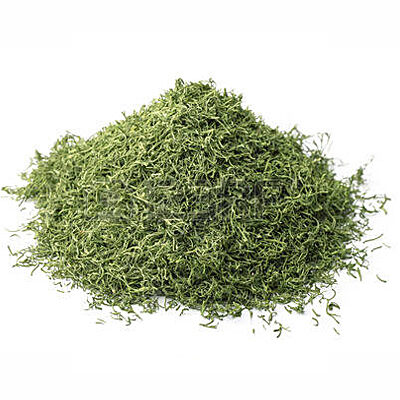The needles cushenogo dill contains per 100g .:-carotene 3,5mg, carbohydrates, 1,8mg, a large set of vitamins C -.. 95.2 mg, Bi, Bz, PP, folic acid, flavonoids, minerals, iron salts. , potassium, calcium, phosphorus and others.dried dill recommended to use for obesity, diabetes, deposition of salts. The infusion of needles and stems take in hypertension and as a diuretic. The infusion of dried dill used both inside protivoge-morroidalnoe, sedative and spasmodic agent externally – as a wound-healing and in allergic skin itching. Dried dill used both in industry and in cooking worldwide.
In the food industry dried dill is used for salting and pickling cucumbers, tomatoes, squash, for the production of marinadnyh fills, spicy and pickled herring, cheese and processed cheese mass of “Summer”. Dried dill is used as a spice (spice), and is part of many aromatic compounds.
Dill is added to meat, fish, mushrooms, cold appetizers, salads, vinaigrettes. Subtle aromatic shade gives hot and cold soups, a good mix of hot and cold pork, lamb, veal, chicken, turkey, duck, venison, fish. Dill flavored dairy dishes, pie fillings.
Nutrition facts per 100 gr .: Calories – 253 kcal, Proteins -. 9,96gr. Fats – 4,36gr, Carbohydrates -.42,22gr, Dietary Fiber -.13,6gr, Ash -.12,56gr, Water -.7,3gr, saturated fatty acids -. 0,234gr,.
Vitamins: Vitamin A (RE) – 293mkg, Vitamin B1 (thiamine) – 0,418mg, Vitamin B2 (Riboflavin) – 0,284mg, Vitamin B6 (pyridoxine) – 1,71mg, Vitamin C – 50 mg, Vitamin PP….. (niacin equivalent) – 2,807mg.
Macronutrients: Calcium – 1784mg Magnesium – 451mg, Sodium – 208mg, Potassium – 3308mg, Phosphorus – 543mg…..
Trace elements: Iron – 48,78mg, Zinc – 3,3mg, Copper – 490mkg, Manganese – 3,95mg….
Energy value – 253 kcal.




